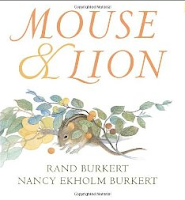Yours truly is responsible for folklore this year, so I have been busy perusing all the myths, legends, folk takes, fables, tall tales, pourqoui tales, you name it (!) that have come out since last year (all must have a 2011 copyright). It has been a lot of fun, since I love traditional literature.
As we learn in library classes, most of these books can be found under 398.2 in the nonfiction section. It is always challenging to explain to young 'uns why books with talking animals and abundant magic are found in the nonfiction section. I always tell students that these are stories that people have been telling each other for hundreds, even thousands, of years. Back in the old days, folk didn't have 3D TVs, X Boxes, radios, or even electric lights. In the evening they would huddle around the fire and listen grandmama tell tales her grandmama had told her, and that her grandmama had told her, etc. Each teller might change the story a little bit--make the dog character into a coyote, or change the setting to winter instead of spring. We are still doing this today, which is why you can read a new version of an old Dutch tale set in China, The Runaway Wok by Ying Chang Compestine.
Another thing about folklore is that no one knows who first made up the story. It is sometimes fun to imagine who first came up with these crazy ideas! Often, the stories' purpose was to caution children against dangers, such as going into the woods alone (see Little Red Riding Hood or Hansel and Gretel). Other times it was to teach a lesson, such as Don't Be Greedy or Think Before You Act.
Which brings me to some of my favorites of 2011:
Please note: suggested ages are my approximations. Anyone can really enjoy these books if he or she wants to!
1. Mouse & Lion by Rand Burkert.
In this beautiful retelling of Aesop's fable the mouse(who is after all the hero of the tale) receives top billing. Readers are left with impression that the lion has become a better king due to the lesson he learns in modesty. Illustrator Nancy Ekholm Burkert, the author's mother, has created magnificent artwork that simultaneously celebrates nature's grandest and smallest wonders. Ages 4 and up
Lesson:
Be kind to others, no matter how small, and your kindness may one day be repaid.
2. The Boy From the Dragon Palace by Margaret Read MacDonald.
An impoverished flower seller is gifted by the Dragon King with a messy, snot-nosed boy. The boy turns out to be more than he seems, for when he sneezes money, food, and even a palace materialize before the man's eyes! But the now-rich man grows complacent and pays a hefty price for his ingratitude. Ages 4 and up
Lesson:
Remain humble, for even if you think you are big and important, you are not.
3. When Apples Grew Noses and White Horses Flew: Tales of Ti-Jean by Jan Andrews.
In these three appealing tales we are introduced to Ti-Jean, the staple youngest son character of French Canadian folklore who is by turns naïve, clever, honest, duplicitous, foolish and wise. In all three stories Ti-Jean gets himself into trouble and must use both wits and magic to prevail. Ages 8-12
Lesson:
Don't fall prey to a golden hair and a pretty face, you fool! (among others)
4. The Wise Fool: Fables From the Islamic World by Shahrukh Husain.
In short one or two page spreads this buoyant book presents vignettes of Mulla Nasruddin, the “wise fool” of the title. Mulla’s stories are always told with humor, which at times masks the underlying political and social commentary. In the introduction we learn that these tales have been traditionally been told throughout the Middle East, India, Russia, and even China. The collage artwork by Micha Archer is glorious! Ages 8-12
Lesson: You can get away with a lot if you are funny.
For younger children see also: Goha: The Wise Fool; A Donkey Reads
5. Ancient Egypt: Tales of Gods and Pharaohs by Marcia Williams.
If you have enjoyed Williams' other cartoon retellings of famous tales (Tales from Shakespeare; The Iliad and the Odyssey) you really must check this out! I love the way these versions make classic stories accessible to children and prime their interest for reading the real thing. As Williams says, the ancient Egyptians were really the first cartoonists, so these tales lend themselves to the format very nicely. And what tales! Seth kills his own brother, for example, seals him into a coffin, and throws the body into the Nile. Then Seth's nephew Horus comes back to avenge his father and battles Seth, who turns himself into a giant, red hippo! This is high-interest stuff indeed.
Look for more posts in the future on some folklore for older readers! It has been a great year for a genre that is often overlooked despite it's many pleasures.










